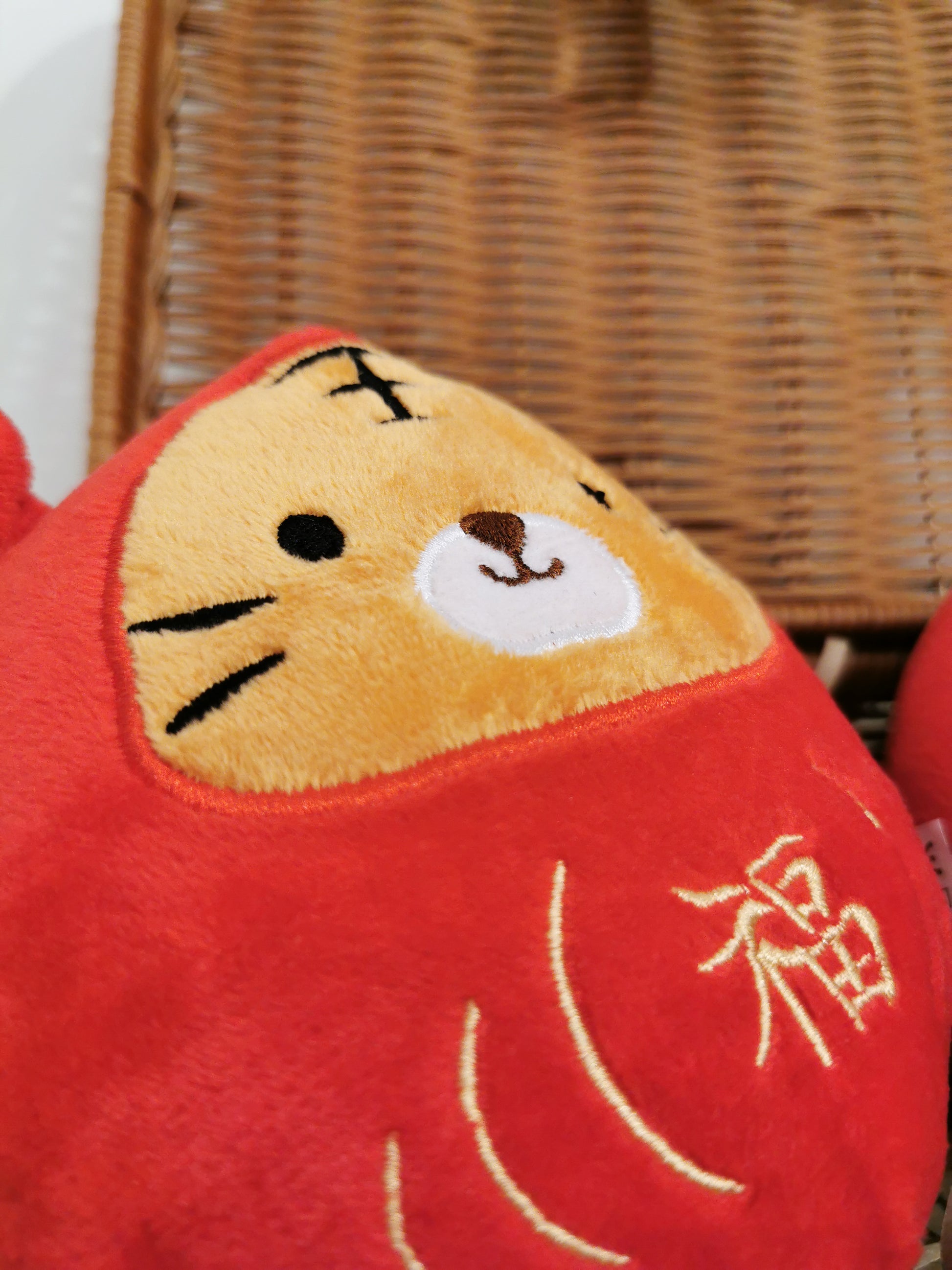Trade | Unleashing the Fortune Tiger – Exploring Its Power, Mystique, and Cultural Significance | 07-2025
In the rich tapestry of Asian cultures, the Fortune Tiger stands out as a powerful emblem of prosperity, protection, and strength. This majestic creature, often depicted in various art forms, mythologies, and spiritual practices, embodies qualities that inspire both awe and reverence. Whether viewed as a symbol woven into the fabric of ancient folklore or reimagined in contemporary designs, the Fortune Tiger continues to thrive as a compelling icon of success and resilience.
Unleashing the Fortune Tiger: A Symbol of Prosperity and Power

The Fortune Tiger is more than just a mythological beast—it’s a symbol that represents a confluence of fame, wealth, and personal empowerment. Traditionally, the tiger has been associated with fierce guardianship, warning against evil spirits, and attracting auspicious energies. Unleashing the Fortune Tiger in various environments—be it personal spaces or spiritual practices—can serve as a powerful reminder of one’s inner strength and the potential to surmount obstacles. This potent imagery encourages individuals to harness their innate qualities of courage and determination to unlock opportunities for prosperity.
In contemporary contexts, people use Fortune Tiger symbols to invoke luck and assertiveness. From adorning homes with tiger motifs to incorporating tiger imagery into business branding, this symbol acts as a catalyst for transforming ambitions into realities. The dynamic energy connected with the Fortune Tiger helps channel positive vibrations—amplifying personal growth, confidence, and the pursuit of success—making it a compelling emblem that continues to inspire across generations.
The Mystique of the Fortune Tiger: Cultural Significance and Interpretations

Across diverse Asian cultures—particularly in Chinese, Korean, and Japanese societies—the Fortune Tiger embodies a complex interplay of symbolism and cultural meaning. In Chinese tradition, the tiger is viewed as the king of the beastly domain, signifying bravery, protection, and impenetrable courage. Its presence in rituals and festivities is believed to ward off evil spirits and bring tangible good fortune. This mystique is further enriched by legends that describe the tiger as a guardian of the heavens, wielding divine power that safeguards the earthly realm.
Interpretations of the Fortune Tiger often vary regionally, reflecting local beliefs and mythic narratives. In some stories, tigers symbolize authority and justice, serving as divine messengers that bridge the human and spiritual worlds. Folk tales often portray the tiger as a protector of villages and a symbol of ancestral strength. The mystique of the Fortune Tiger underscores a universal appreciation for its dual qualities of ferocity and benevolence, making it both a revered and feared figure that embodies the forces of nature and human aspiration.
Fortune Tiger in Art and Design: Exploring Its Visual Representations

Throughout history, the Fortune Tiger has been a prominent motif in traditional art, sculpture, and decorative objects. Its visual representations are often characterized by dynamic postures, fierce expressions, and intricate detail, emphasizing the creature’s power and majesty. Artists have used various mediums—from ink paintings and pottery to textiles and carvings—to evoke the tiger’s commanding presence, infusing each piece with symbolic meaning to attract luck and protection.
Modern design has expanded the visual language of the Fortune Tiger, blending traditional motifs with contemporary aesthetics. Graphic designers incorporate sleek, stylized tiger imagery into branding, jewelry, and home décor. These representations often feature vibrant colors—especially red, gold, and black—that symbolize prosperity, good fortune, and vitality. The evolving visual representations underscore the tiger’s significance as an adaptable symbol that resonates with both historical reverence and modern innovation, making its imagery timeless and compelling.
The Fortune Tiger in Mythology and Folklore: Tracing Its Ancient Roots
Mythology and folklore serve as the fertile ground from which the Fortune Tiger draws its legendary aura. In Chinese myth, the tiger is one of the four celestial animals representing cardinal directions—specifically the West—and is associated with autumn and the element metal. Ancient legends portray tigers as divine creatures capable of warding off evil, embodying primal strength that commands respect and reverence. Such stories often depict the tiger as a protector of sacred spaces, a guardian against malevolent spirits, and a symbol of natural order.
Folklore further cements the Fortune Tiger as a harbinger of good luck and authority. Tales depict brave warriors or sages embodying the tiger’s spirit, gaining supernatural strength through its influence. In Korean legends, the tiger often appears as a wise creature that guides humans through moral lessons. These ancient narratives reveal the deep-rooted cultural association of the tiger with strength, protection, and divine power—elements that continue to influence how the Fortune Tiger is perceived today.
Harnessing the Fortune Tiger’s Energy: Practical Applications for Luck and Success
To harness the potent energy of the Fortune Tiger, many individuals incorporate specific practices into their daily routines. Meditation, visualization, and prayer centered around tiger imagery help focus one’s intentions, fostering a mindset of resilience and assertiveness. Some practitioners suggest placing tiger statues or images in strategic areas of their homes or offices to attract positive energy flows, similar to the principles of Feng Shui, where the tiger’s symbolic strength is believed to ward off negative influences.
Beyond ritualistic practices, people use the Fortune Tiger as an inspirational emblem for motivation and leadership. Athletes, entrepreneurs, and artists often embrace tiger motifs in their personal branding or workspace décor to invoke qualities of bravery, resilience, and determination. The key lies in aligning one’s mindset with the tiger’s potent symbolism—embodying focused courage and aggressive pursuit of goals—thus actively participating in manifesting personal and professional success.
The Fortune Tiger and Feng Shui: Optimizing Your Space for Prosperity
Feng Shui, the ancient Chinese art of spatial arrangement, is deeply intertwined with the symbolism of the Fortune Tiger. When appropriately positioned, a tiger image or statue can serve as a protective barrier against negative energies, promoting harmony, safety, and wealth in living and working spaces. Traditional Feng Shui guidelines recommend placing tiger symbols at the entrance of a property facing outward to ward off evil or near important areas where success is desired, such as workstations or wealth corners.
Harnessing the Fortune Tiger in Feng Shui practices requires understanding the balance of elements and energy flow. For instance, incorporating tiger motifs alongside fire or earth elements is believed to amplify their protective and auspicious energies. Proper placement and intentional use of these symbols can significantly influence personal fortune by activating the “power” of the Fortune Tiger, fostering an environment conducive to growth, abundance, and security.
From Myth to Marketplace: The Commercialization of the Fortune Tiger Symbol
The Fortune Tiger has transitioned from ancient myth to a thriving commercial motif that spans art, fashion, jewelry, and home décor. Commercial enterprises recognize its emotional and cultural resonance, creating a demand for tiger-themed products that evoke feelings of strength and prosperity. From luxury jewelry with tiger motifs to mass-market souvenirs featuring stylized tiger images, this symbol’s commercial appeal lies in its universal association with good luck and power.
However, commercialization also raises questions about cultural appropriateness and authenticity. As the Fortune Tiger becomes a popular consumer item, it is essential to respect its cultural origins and symbolism. Responsible marketing ensures that these symbols are presented with cultural sensitivity while allowing it to reach a global audience. The commercialization underscores the tiger’s enduring appeal, proving that ancient symbols can evolve and find new relevance in contemporary markets.
The Fortune Tiger’s Evolutionary Significance: Analyzing Its Symbolism Through Time
The Fortune Tiger‘s symbolism has evolved over centuries, reflecting societal, spiritual, and artistic shifts. While its core attributes—strength, protection, and good fortune—remain consistent, the ways in which it is represented have adapted to cultural change. In ancient times, the tiger was often a divine or supernatural being seen as an ominous yet revered creature. Today, it is frequently portrayed in a more approachable manner, emphasizing its role as a protector and talisman.
This evolution reveals a broader trend of integrating ancient symbols into modern perspectives, balancing respect for tradition with contemporary values. The Fortune Tiger has transitioned from a mythic guardian to a fashionable and spiritual icon adaptable across different contexts—urban décor, personal talismans, or corporate branding—demonstrating its enduring relevance. Its evolution highlights how symbols can masterfully bridge the past and present, maintaining their significance across generations.
Modern Interpretations of the Fortune Tiger: Reimagining an Ancient Symbol
In modern society, the Fortune Tiger is reimagined through innovative art, fashion, and media, embodying a fusion of tradition and contemporary aesthetics. Artists and designers experiment with abstract, minimalist, or even playful renditions of the tiger, creating new visual languages that appeal to younger audiences and global markets. These reinterpretations often emphasize the tiger’s attributes—courage, power, and resilience—while adapting its form to suit emerging cultural trends.
Contemporary reinterpretations also extend into pop culture—appearing in movies, fashion campaigns, and digital media—where the Fortune Tiger is presented as an emblem of strength in the face of adversity. This reimagining injects modern values of individuality, empowerment, and innovation into the ancient symbolism, allowing it to resonate with new generations. Ultimately, these fresh perspectives demonstrate how ancient symbols, like the Fortune Tiger, can be continuously reshaped without losing their core essence.
Collecting Fortune Tiger Artifacts: A Guide for Enthusiasts and Investors
Collecting Fortune Tiger artifacts can be both a passionate pursuit and a savvy investment. From antique jade carvings, traditional paintings, to contemporary sculptures, each piece offers a glimpse into a rich cultural history and personal devotion to prosperity symbols. Enthusiasts should consider the artifact’s origin, craftsmanship, and cultural authenticity to build a collection that is both meaningful and valuable.
Investors analyzing the market recognize that rare and authentic Fortune Tiger pieces—especially those with provenance or historical significance—can appreciate significantly over time. Modern collectibles—such as limited-edition jewelry or limited-run art prints—also present lucrative opportunities. Whether for personal spiritual practices or as a cultural investment, curating a collection of Fortune Tiger artifacts involves understanding their symbolic meanings, artistic quality, and market trends, allowing collectors to preserve cultural heritage while potentially reaping financial rewards.
Conclusion
The Fortune Tiger remains an enduring symbol that embodies strength, protection, and prosperity across cultures and centuries. Its mythological roots, artistic representations, and modern adaptations showcase a versatile icon that bridges ancient traditions with contemporary relevance. Whether used in spiritual practices like Feng Shui, depicted in art and design, or commercialized in global markets, the Fortune Tiger continues to inspire individuals seeking success and resilience. Recognizing its evolving significance encourages a deeper appreciation of this majestic creature—not just as a symbol of luck but as a profound reflection of human aspiration, cultural identity, and artistic ingenuity.
POSTER SEO_SIBATOOL

